INSTALLATION AND DEINSTALLATION
This is my first time working independently on an exhibition and I learnt a lot from it.
LOGISTICS
The first thing I need to do is to book the materials I need. I booked four plinths with the art shop staff on April 11, so I was able to collect them on the 19th without any problems. However, some other members went to borrow plinths on the 19th and ran the risk of not being able to borrow the materials they wanted.
Secondly, deinstallation and installation. I thought that the staff would help me to carry the plinths to the Fire Station at first, but I didn’t expect that I would have to borrow a trolley and carry them by myself. I would like to thank Jake and one of the blue-clad staff for helping me get the plinths off the trolley. However, I forgot to wear gloves so I cut my hand. I need to remember to keep gloves on to protect myself when doing prep work in the future.
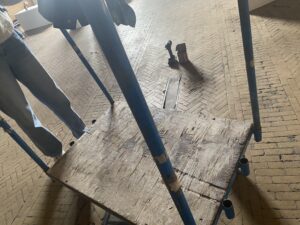
When it was time for deinstallation, Tianxing and Chang and I took the plinths onto the trolley and returned them to the art shop, which was a bit of a struggle. But we found that there was a door that could have been opened to let people through to avoid the long winding ramp. But at number 21 the door was locked at first so we had to push the long trolley up the curved ramp. It was a testing thing to do but we persevered. Many thanks to both of them for helping me out.
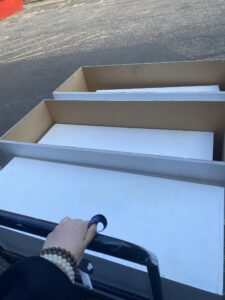
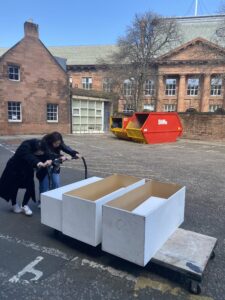
Thirdly, after I finished my installation, I helped Tianxing Peng with the blackboard and notes and I also helped Chang Yu and Xiaotong Wu with the pasting of their work. As a member of the team I felt it was my responsibility to help them.
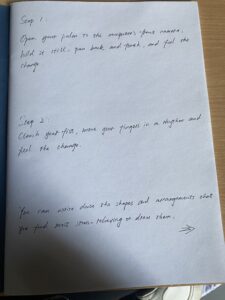
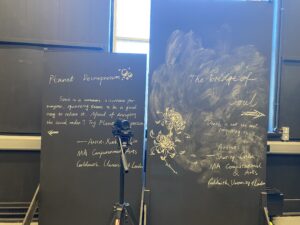
TECHNICAL.
Firstly, the printing of the paper. The biggest difficulty I had was not printing the poster I wanted. I wanted to print a normal A3 sheet of paper, but it was the wrong size because of poor coordination. In the end I chose to make a patchwork of several mistyped sheets of paper in an irregular shape for my poster. But I think the irregularity of the poster also fits the theme of ‘dual identity’. Because everyone encounters different situations in social life and different people relate to them in different ways, everyone can be a “certain kind of person”, that is, irregular.
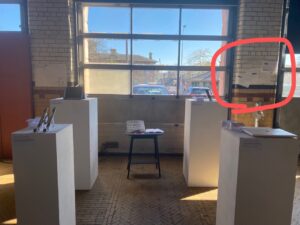
Secondly, paint the plinths to deal with the uneven areas. Because the borrowed plinths had sections of paint that had fallen off, they needed to be repainted. There was no way to replace the rugged plinths but to sand them down with a spatula and sandpaper. This was my first time sanding a plinth and it was an eye opener for me.
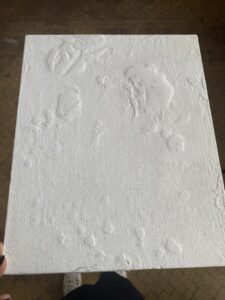
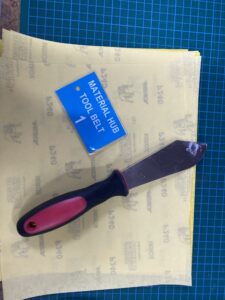
PRACTICAL.
Firstly, the choice of location. Initially I chose to place the exhibition in the corner of Fire Station near the fire door, but JL suggested that I move the venue 10 metres forward. Firstly, to make way for the fire door. And secondly, to allow for better lighting, which would be more aesthetically pleasing and better for the viewer to appreciate the work. This was something I did not consider properly. When laying out the exhibits I need to consider the overall aesthetics of the venue and also the lighting.
Secondly, the interaction between the design and the audience. I wanted to get the viewers’ feelings about the videos in the exhibition so I prepared a message board and voting dots. Visitors could connect the videos with A1/A2/B1/B2 based on their judgement of the similarity of the theme of the video. The feedback from the floor showed that the design worked.

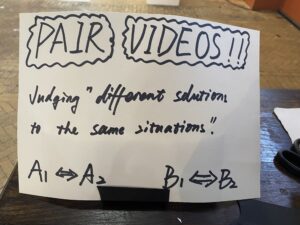
However, during the installation process, I found that there were still areas where we needed to communicate and improve. For example, the timing of the installation. At Fire Station, there were different exhibitions on the 20th and 21st, and according to the installation schedule, our team thought that we would install the works on the 20th on the 19th and then remove them on the 20th and install the works on the 21st. But in reality it turned out that all the exhibitions were installed during the day on the 19th and 20th so this led to confusion in our arrangements. We need to remember this in our future studies and practice: check the timings with the team members, confirm the timings with the venue arrangements and other focal points and don’t make any more mistakes in the timings that lead to confusion in the set up of the site.




Recent comments